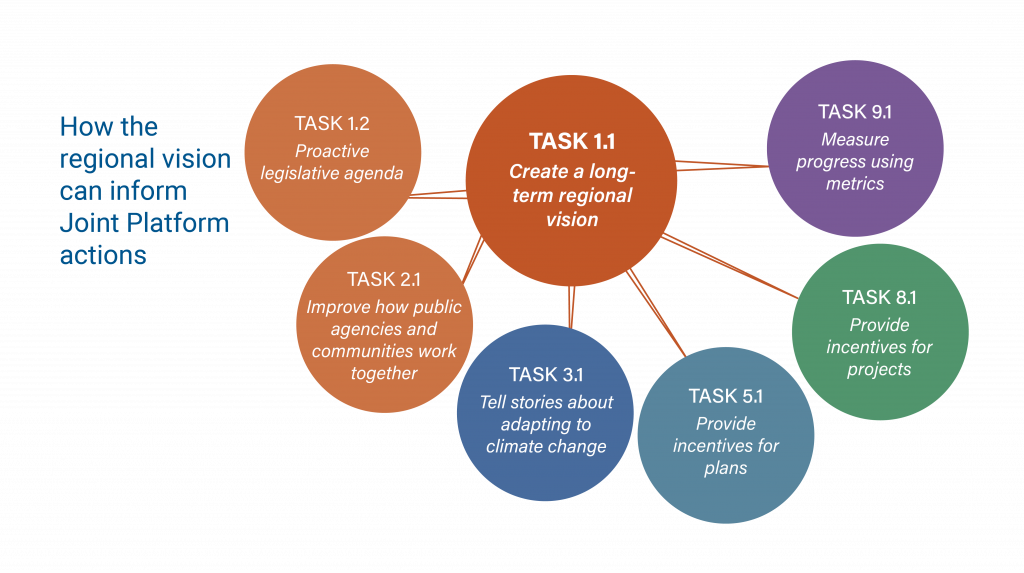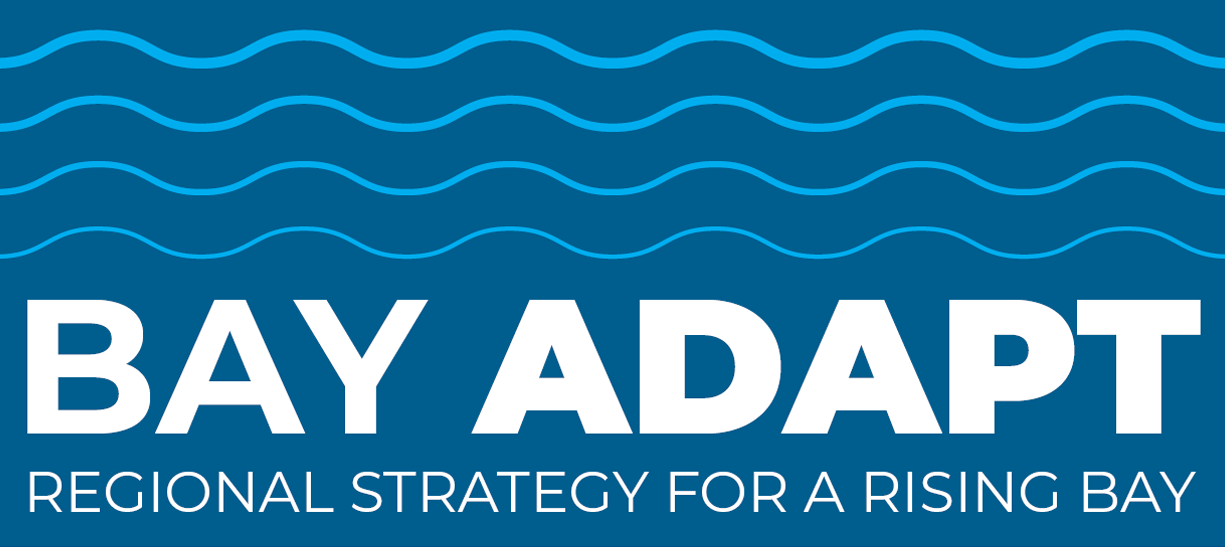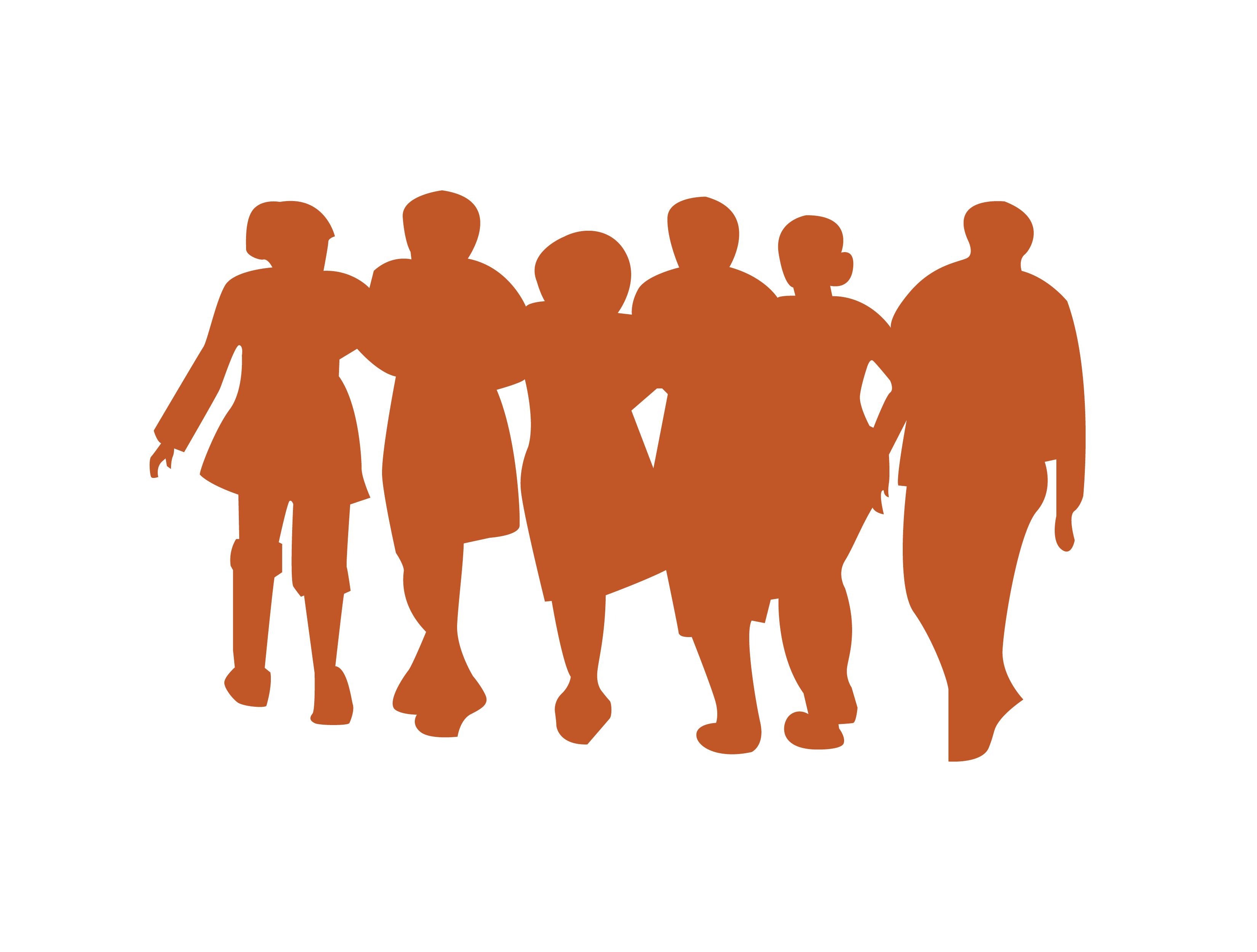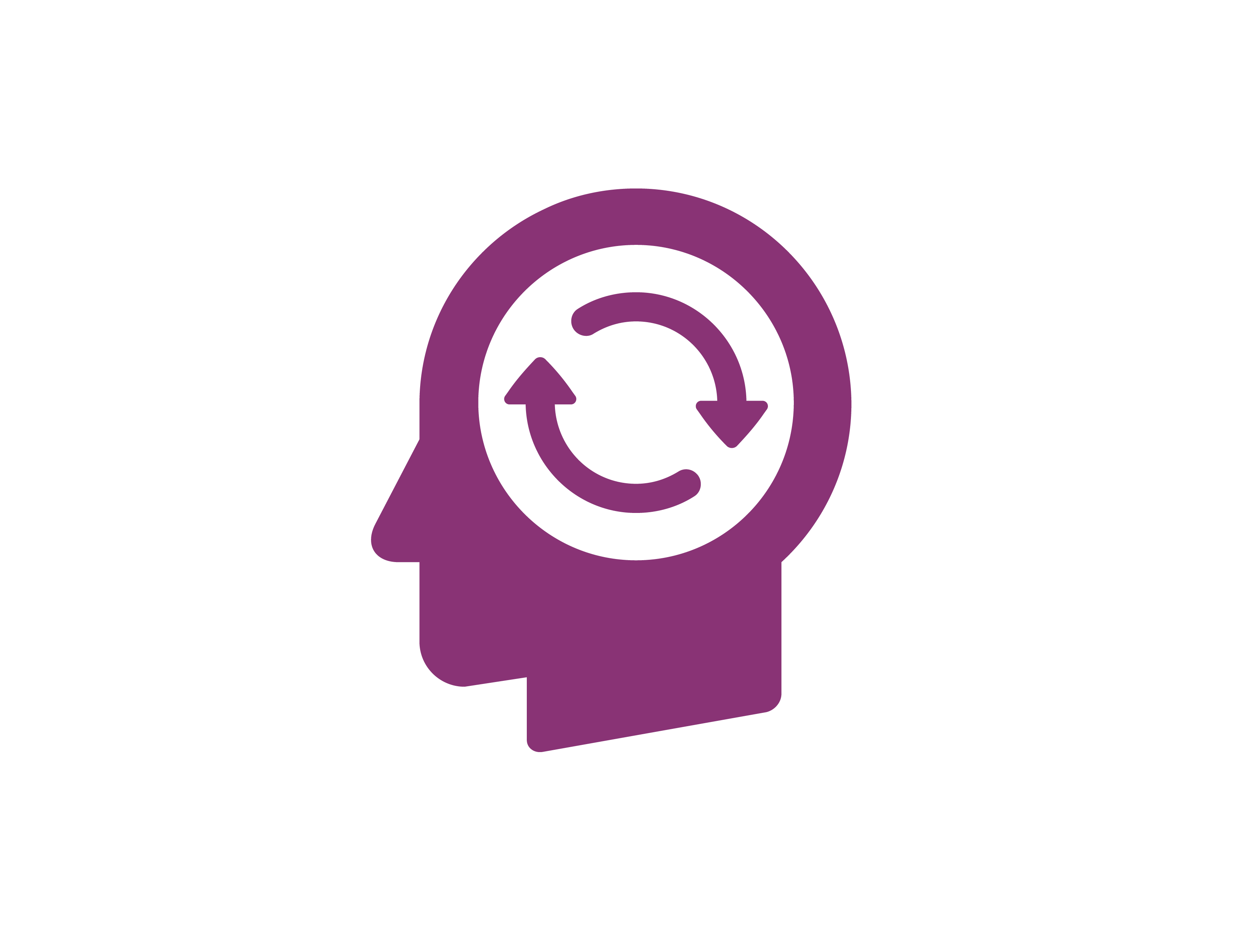
PEOPLE
As we adjust the way we live, work, and play to adapt to a changing climate, we must act together with a true regional vision and ensure that this transition does not reinforce pre-existing inequities.
Who will lead who will decide, and how do we all get on the same page? Frontline communities that feel the most acute impacts from sea level rise have local knowledge critical for equitable solutions. Likewise, legislators in Sacramento and Washington need to hear our collective voice loud and clear—two-thirds of the State’s total sea level rise impacts will occur in the Bay Area, so our collective voice must be strong.
Explore Actions and Tasks
- ACTION 1: Collaborate on a "One Bay" vision to adapt to rising sea levels.
- Task 1.1 Create a long-term regional vision rooted in communities, bay habitats, and the economy.
- Task 1.2: Lay the foundational for a proactive legislative agenda.
- ACTION 2: Elevate Communities to Lead.
- Task 2.1: Improve how communities and public agencies learn from each other and work together.
- Task 2.2: Fund the participation and leadership of community-based organizations (CBOs) and frontline communities in adaptation planning.

ACTION 1: Collaborate on a “One Bay” vision to adapt to rising sea levels.
Goals:
- A shared vision for regional adaptation that reflects the Bay Area’s diverse conditions and communities.
- A proactive legislative agenda supporting sustained Bay Area adaptation.
TASK 1.1: Create a long-term regional vision rooted in communities, bay habitats, and the economy.
Engage communities and stakeholders in envisioning a resilient future shoreline, relying on grassroots input from start to finish. Using Bay Adapt’s Guiding Principles to guide the process, it should define and articulate what successful adaptation should like at ground level, and around the Bay, beginning in the most at-risk frontline communities.
The vision must be built on a deep understanding of communities’ unique social, cultural, economic, and physical needs and be developed through a participatory, transparent, and iterative process and create opportunities for diverse stakeholders to learn about each other and have conversations. The vision must also be built on regional environmental, housing, transportation, recreation, economic and other priorities, including visions already established for these sectors, such as in Plan Bay Area 2050 or the San Francisco Estuary Blueprint.
The vision should be expressed through multiple deliverables that will be utilized throughout many other tasks included in the Joint Platform, including:
- A “vision statement” for the Bay shoreline that sets a long-term picture of successful adaptation.
Regional and sub-regional objectives, tied to measurable metrics (such as safety, equity, a functioning and thriving ecosystem, reuse of sediment resources, shoreline access, and economic growth), to be used for tracking progress in Task 9.1. - Specific regional and sub-regional strategies, actions, and an assessment of priority project locations, types, and timelines, building off existing analysis such as on vulnerable communities, Bay interconnectedness, and the Adaptation Atlas. This can be used in conjunction with the above guidelines to incentivize and prioritize the right kinds of actions in the right locations.
- Guidelines, evaluation methodologies, and technical modeling capacities for evaluating local plans and projects for funding and other incentives that align with desired outcomes (Tasks 5.1, 6.2, and 8.1).

See Task 1.1 in the Draft Implementation Brief for details and ideas for advancing the Joint Platform actions.
TASK 1.2: Lay the foundation for a proactive regional legislative agenda.
Build a unified advocacy voice for Bay Area adaptation needs. In the short term (next two years), pilot a legislative working group to work toward consensus on regional priorities and shared criteria for future legislation while taking advantage of opportunities within current state and federal legislative sessions. Foster relationships with state and federal legislators to lay the groundwork for future legislation. Build support for the nine-county Bay Area as the focus for new regional climate adaptation programs. In the mid-term (2-4 years), build support for multi-year sources of funding for a wide range of adaptation activities, such as a regional ballot measure. Identify and collectively advocate for additional regional priorities that would require legislation, such as regulatory changes, planning guidance, new fiscal authorities, and funding support. In the long term (5+ years), coordinate, update and communicate legislative needs on a biennial basis, such as through an annual legislative agenda.
See Task 1.2 in the Draft Implementation Brief for details and ideas for advancing the Joint Platform actions.
Action 1 Benefits

Equity
Elevates frontline community voices in long-term regional visioning and advocacy

Environment
Elevates environmental advocacy voices in long-term regional visioning and advocacy

Economy
Elevates business and economic voices in long-term regional visioning and advocacy

ACTION 2: Elevate communities to lead.
Goals:
- Adaptation grounded in local vision and needs.
- Increased capacity of community members, especially those historically excluded from decision-making, to contribute to the process.
- Long-term funding that supports sustained community leadership and equitable partnerships among communities and governments.
TASK 2.1: Improve how communities and public agencies learn from each other and work together.
Build community capacity to influence government and support a region-wide training program led by communities and geared towards government to shift values towards place-based expertise. Adopt and share best practices for equity-focused adaptation decision-making throughout the region. Ensure that best practices nurture meaningful relationships, center community concerns and priorities, and make community and social benefits clearer.
Support community leaders in raising awareness and capacity within their own communities. Host trainings for communities on sea level rise risks, adaptation options, community storytelling, and best practices for engaging effectively with governments. Whenever possible, choose community-based organizations (CBOs) or community members to lead trainings geared toward government and communities.
Training topics for agency staff may include general environmental justice and local histories, community mapping, culturally appropriate communication, meaningful community engagement at all phases of planning, use of community benefit agreements, alternative approaches to traditional cost-benefit analyses that elevate community value, and measuring successful engagement.
See Task 2.1 in the Draft Implementation Brief for details and ideas for advancing the Joint Platform actions
The Greenlining Institute, an Oakland-based advocacy group, has created a guidebook to help users embed equity in a meaningful way in climate adaptation and community resilience policies and programs. Access the Guidebook.
A coalition of community organizations in East Oakland partnered with the City of Oakland to secure a Transformative Climate Communities grant for local equitable climate planning. City staff and community groups collaborated on the scope of work, goals, and budget for the project. The resulting community-driven plan led to a $28 million implementation grant. Access the Plan.
The West Oakland Environmental Indicators Projectreceived a Restoration Authority grant to lead a Shoreline Leadership Academy to raise the capacity of local frontline community residents to engage and lead in climate adaptation. Participants are paid for their time to develop plans for the shoreline while increasing their knowledge and participation.The Resilient Communities Initiative created an equity checklist and sample partnering agreement that could be a model for successful future partnerships. Access them Here.
The Bay Area Regional Health Inequities Initiative (BARHII) recently released a new report on best practices for community engagement to create healthy and resilient communities. This report can serve as a resource for governments. Access it Here.
TASK 2.2: Fund the participation and leadership of CBOs and frontline communities in adaptation planning.
Establish a stable and ongoing funding program to support frontline communities and CBOs as full partners and leaders in adaptation planning. Use the funding to build and sustain community capacity to participate in decision-making as described in Task 2.1. Support CBO operating expenses, staffing, stipends for community representatives in planning processes and meetings, and expenses associated with participation such as transportation, food, and childcare. Also fund the community-led training programs identified in Task 2.1.
Consider state budget or bond allocations, legislation, grants, development fees, or regional funding measures as sources of funding. Equity initiatives could receive a dedicated percentage of any resilience-focused funding, for example. Other initiatives to increase community access to funds could include supporting collaborative grant-writing, or streamlining the process for governments or industry partners to contract with CBOs (such as setting up a bench of CBOs available for fee-based consulting and managing those contracts on behalf of the CBOs)
See Task 2.2 in the Draft Implementation Brief for details and ideas for advancing the Joint Platform actions
Action 2 Benefits

Equity
Elevates frontline community members as key decision-makers and compensates them for their time and expertise.

Environment
Prioritizes natural resources that people value, promoting local stewardship.

Economy
Prioritizes local businesses and jobs, keeping local economies thriving.





